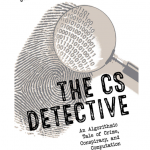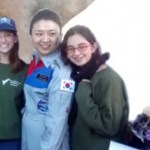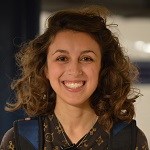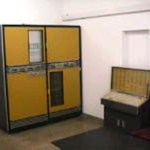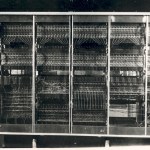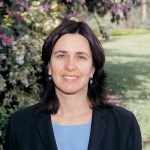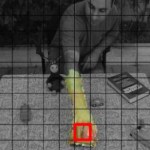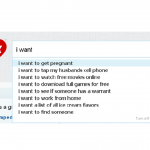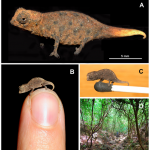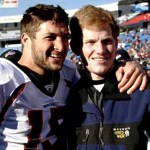Computer Science
The CS Detective: An Algorithmic Tale of Crime, Conspiracy, and Computation by Jeremy Kubica is the tory of disgraced ex-detective and hardboiled private eye Frank Runtime.
Frank Runtime knows REGEX and is not afraid to use it.
From the publishers:
When a robbery hits police headquarters, it's up to Frank Runtime and his extensive search skills to catch the culprits. In this detective story, you'll learn how to use algorithmic tools to solve the case. Runtime scours smugglers' boats with binary search, tails spies with a search tree, escapes a prison with depth-first search, and picks locks…
Is this science writer jazzed that ninth-grade girls from a religious girls’ school in Jerusalem won a space/science contest? You bet your sweet solar-powered spacelab she is! It is not just that these girls beat out a lot of other classes (over 400), or that they break more than one stereotype. They also came up with a pretty clever idea for studying the Sun: Send a spacecraft to scatter assorted nanolabs all over an asteroid that is about to pass close to the Earth on its way to the Sun. The contest is held every year in memory of Israeli astronaut Ilan Ramon, who went down with the crew of…
Photo Credit: Focus Features
In our recent STEM in the News Blog, read how science is making waves at the 87th Academy Awards, our Youth Advisory Board is working to encourage more girls to pursue computer science, stereotypes need to be shifted and students in middle and high school can attend the ultimate STEM field trip. Click here to read the full blog.
Carlos Bueno's new book, Lauren Ipsum: A Story About Computer Science and Other Improbable Things, is another example of how to create a fun and informative books for kids that is both entertaining and engaging. While not without some faults, it does a great job of using character and story to convey serious ideas about computer science in an accessible way.
The premise of the story is that our plucky heroine, Lauren Ipsum, or Laurie, gets lost in the forest after an argument with her parents and somehow finds her way into the mysterious alternate reality Userland. In order to find her way…
The ‘Nifty Fifty (times 4)’, a program of Science Spark, presented by InfoComm International, are a group of 200 noted science and engineering professionals who will fan out across the Washington, D.C. area in the 2014-2015 school year to speak about their work and careers at various middle and high schools.
Meet Nifty Fifty Speaker Cassidy Williams
Twenty-two year old Cassidy Williams is passionate about being a role model to encourage more young women to pursue careers in computational science and other areas of science, technology, engineering and mathematics (STEM). As…
Here is a photo of one of the Golem computers on which Arieh Warshel and Michael Levitt -- this year's Nobel Prize in Chemistry winners, along with Martin Karplus -- did much of their original work.
Golem computer
My dad was a computer programmer at that time, so I have some idea of what their work must have entailed. To this science writer, that makes their feat nothing short of amazing.
The Golem, by the way, which is preserved in the basement of the Weizmann Institute's mathematics building, was not the first computer at the Institute. The WEIZAC (below) was built at the…
Google's official blog has a post today on the first computer in Israel: WEIZAC, built at the Weizmann Institute in the 1950s. Prof. Aviezri Frenkel gives a charming description of the project, including the fireworks when the machine was first turned on, in the presence of the VIPS who had come to see the new wonder.
http://googleblog.blogspot.co.il/2013/06/remembering-weizac-beginning-of.html
The foresight of the scientists who decided to build the computer is mentioned. But we can also thank them for their foresight in preserving this piece of computing history once newer computers…
Someone shoot me if I ever use the term NP-complete in a sentence. Or at least if I ever use the term in a conversation with "civilians."
Such is the dilemma of reading and reviewing a wonderful book like Lance Fortnow's The Golden Ticket: P, NP, and the Search for the Impossible. I'll be tempted to start throwing around terms that Fortnow has explained so well and so clearly. A temptation I should resist. Instead I should recommend this book.
Anyways, what's the book about? As the title indicates, the purpose is to explain to a popular audience the computer science concept of P vs. NP, in…
It was an unexpected journey, from the George W. Bush Shake, the Barack Obama Hug to the Harlem Shake.
Appreciation from the President of the United States is one of the highest honors any American can receive. No, it wasn't me, but the best part is that it was one of our students.
I have been very fortunate in my own education having learned from two mentors awarded the National Medal of Science (Prof. Tobin J. Marks and Prof. Stephen J. Lippard.) Each received a hearty handshake from President George W. Bush. Perhaps some of my work in their labs helped get them there, along with a…
Prof. Shafi Goldwasser, who is at both the Weizmann Institute and MIT, will receive the 2012 A.M. Turing Award, together with Prof. Silvio Micali of MIT. Goldwasser is only the third woman to receive the Award since its inception in 1966, and she is the third faculty member of the Weizmann Institute to receive what is considered to be the “Nobel Prize in computing.”
Goldwasser and Micali’s work in the 1980s laid the foundations of modern cryptography – the science that, among other things, keeps your electronic transactions secure.
The basis of their work is a series of riffs on the…
The idea of “seeing the world through the eyes of a child” takes on new meaning when the observer is a computer. Institute scientists in the Lab for Vision and Robotics Research took their computer right back to babyhood and used it to ask how infants first learn to identify objects in their visual field.
How do you create an algorithm that imitates the earliest learning processes? What do you assume is already hard-wired into the newborn brain, as opposed to the new information it picks up by repeated observation? And finally, how do you get a computer to make that leap from a data-crunching…
I'm on my annual summer hiatus for the month of July so I'll be only publishing my weekly Friday Fun posts as well as re-posting some of the interviews I did a few years ago on the old blog with people from the publishing, library and science worlds. Not that my posting of late has been particularly distinguishable from the hiatus state, but such is the blogging life after nearly ten years: filled with ups, downs, peaks, valleys.
This interview, with Eugene Wallingford, is from July 9, 2008.
I'm hoping to get these out weekly, but we'll see. They're mostly cobbled together in odd moments…
John MacCormick's new book, Nine Algorithms That Changed the Future: The Ingenious Ideas That Drive Today's Computers, is very good. You should buy it and read it.
Among all the debates about whether or not absolutely everybody must without question learn to program (pro, con), it's perhaps a good idea to pause and take a look at exactly what programs do.
Which is what this book does. It starts from the premise that people love computers and what they can do but don't have much of an idea about what goes on inside the little black box. And then, what MacCormick does is take nine general types…
Would you learn a language by taking a written text and changing letters here and there, or moving a few words around, and asking whether the meaning has changed? That may not be the most efficient way to learn French, but a Weizmann Institute scientist is betting that it will be a very useful way to improve our grasp of what is written in our DNA. Prof. Eran Segal, a computer scientist cum biologist, and his team developed a quick method for rewriting DNA that enables thousands of changes to be created at once, each in its own little, living cell, and measuring the effects of each such…
Could ask.com provide a snapshot of our collective inquiring minds?
Here's a sample of this evening's "snapshot." What does it say about us?
The "suggestions," based simply on typing "I want" or "why" reveal an interesting algorithm - can any computer scientists comment? I do wonder who is asking some of those questions!
What would you say are the strongest three factors associated with the salaries of major-league baseball players? According to a popular, well-established algorithm, the main influential factors are walks, intentional walks and runs batted in.
How much does he earn?
But a paper recently published in Science reports on a new data analysis tool, which is able to find interesting relationships and trends in complex data sets - relationships that are invisible to other types of statistical analyses.
This could be a big deal: Large data sets with thousands of variables are increasingly common in…
"Air guitar" has taken on almost cult status in some circles. How about "couch guitar"?
This video is a clever application of robots, engineering and music.
From the University of Pennsylvania:
Quadrotors designed and built at the University of Pennsylvania perform the James Bond Theme by playing various instruments including the keyboard, drums and maracas, a cymbal, and the debut of an adapted guitar built from a couch frame. The quadrotors play this "couch guitar" by flying over guitar strings stretched across a couch frame; plucking the strings with a stiff wire attached to the base of…
Brookesia micra sp. n. from Nosy Hara, northern Madagascar.
Imagine a supercomputer suitable for this cute little guy, the recently discovered Brookesia micra.
Developing computers and transistors at smaller and smaller scales is happening at a stunning rate. The most recent discovery, just published February 19 in Nature Nanotechnology takes the prize: a single atom transistor!
From their Abstract {excerpted for clarity}:
The ability to control matter at the atomic scale and build devices with atomic precision is central to nanotechnology. The scanning tunnelling microscope can…
YEDA Research and Development Company LTD., the commercial arm of the Weizmann Institute of Science, today announced it has entered into a license agreement with Adobe Systems Incorporated related to a bidirectional similarity measure to summarize visual data.
Here are some examples:
Before:
After:
For more information, see our press release or Prof. Irani's website.
Before:
After:
Tim Tebow Foundation
Tim Tebow with Jacob Rainey, one of the many people dealing with health problems Tebow hosted at Broncos games this season.
Photo source.
Denver Broncos Quarterback Tim Tebow has become a popular culture phenomenon not only because of his extraordinary athletic skills but because he lives out the values of his religious faith - displayed publicly and shamelessly - everyday (more on that later.) But something that has not received much coverage in the news media is that three years ago, Tim Tebow had a "mysterious pain in his throwing shoulder" and he sought out some…
